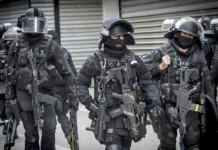
While weapon mounted handgun lights have shrunk to the point of being concealable many still choose to carry without one. There are a number of reasons, some want to reduce bulk or their carry guns too small for lights, or they can’t find a holster and light combo that works. There are plenty of valid reasons to carry a weapon and flashlight separate from each other, and numerous people and organizations have created a variety of different flashlight techniques.
I researched and practiced with numerous styles and techniques, and wanted to provide a good how-to, as well as the pros and cons of each.
The Grips
There are two basic grips with a flashlight. The sword grip, in which hold the light with the palm upwards. Your fingers are fully wrapped around the light with the lens on the same end as your thumb and pointer finger. Works best with flashlights with side switches. The sword grip isn’t used very often due to modern light design.
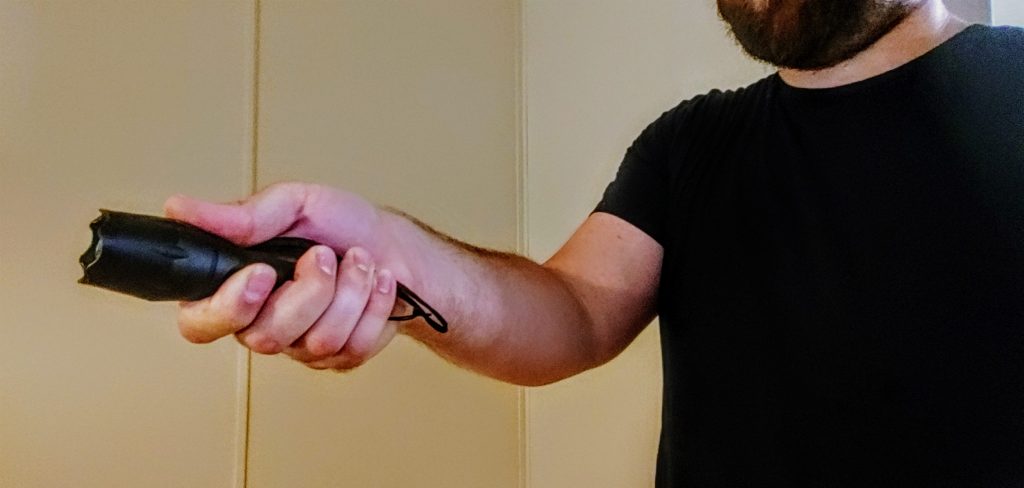
The Second is the ice pick grip. Your palm is facing downwards and your thumb is on the opposite end of the light. With modern light design, your thumb is positioned next to the light’s power switch and is a more common grip.
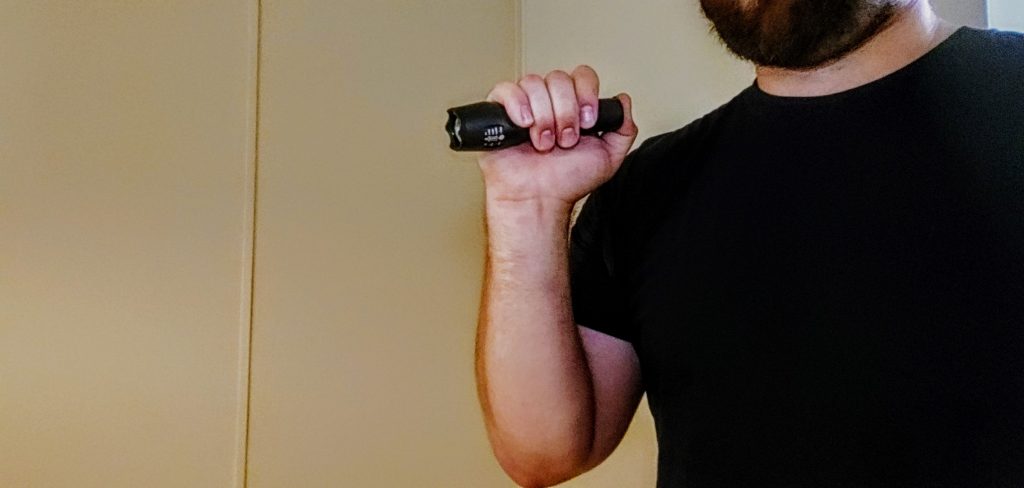
Harries Technique
The Harries Technique is an old technique that at the time of its invention was innovative. At the time it was invented lights were massive, think Mag-lite sized flashlights. It made more sense then, but can still work with today’s lights.
You hold your gun in your dominant hand and your flashlight in your offhand. Extend it into a Weaver shooting position with one hand. Your flashlight and the hand holding it goes underneath the shooting hand and you press the backs of both your hands together. This creates tension and aids in stability.

This works, but you do sacrifice some control with your weapon. You’re effectively using one hand and a little tension to engage a target. It will make shooting fast, accurately, or far difficult.
Cheek or Neck Index
Another option that utilizes one hand is the cheek or neck index method. This has you extending with your firing hand and bringing your light hand to your neck or cheek. It’s positioned at the neck or lower cheek to avoid block your peripheral vision.

It does position the light so you can always see where you are looking. This flashlight technique is very simple, and quick to assume. However, it does highlight your head as a target and only allows for one-handed shooting.
FBI Technique
As far as flashlight techniques go the FBI technique looks somewhat goofy. You extend your firing hand forward into a one-handed shooting position. Raise your light holding hand as if you were attempting to flex your bicep. Your arm is essentially at a 90-degree angle.
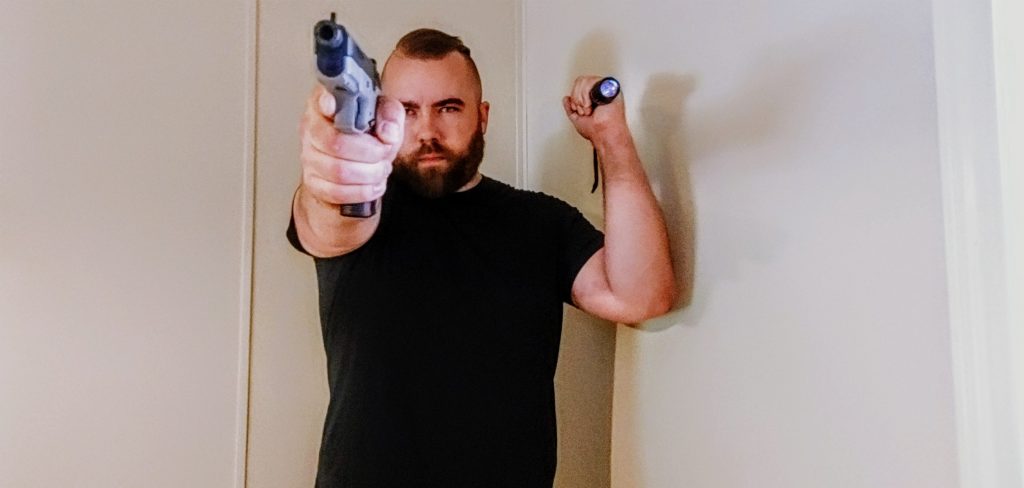
This holds the light away from your head and body and doesn’t draw fire to your vitals. However, you are still only shooting with one hand, and holding a light in this position is tiresome. It’s often a position you switch from cheek index too, and vice versa.
The Two Handed Techniques.
The above techniques are all unique, but also encourage one-handed shooting. More modern techniques have found methods that utilize both hands and your light. The Surefire, Chapman, and Ayoob techniques are very similar and seem to differentiate between how the fingers orient over the flashlight.
These flashlight techniques offer greater control over your weapon and are easy to use with modern shooting stances.
The Surefire
My personal favorite of all these flashlight techniques is the Surefire. The Surefire Technique is the most comfortable with modern lights and rear power switches. The Surefire technique has you position the light between your pointer finger and your middle finger. The rest of your fingers wrap around the grip of your handgun. Your light should not be touching the gun.
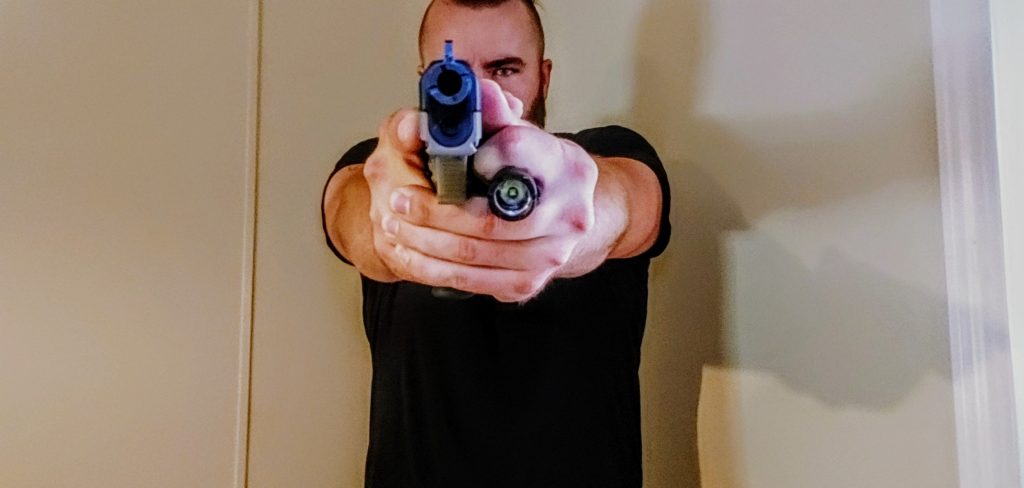
This technique is quick and easy to assume and comfortable with smaller modern lights only. With this grip, you have no problem activating a light with a tail switch. This modern technique has a learning curve but is well worth practicing.
The Chapman
The Chapman technique uses a modified sword grip. You wrap your thumb and pointer finger around the light. The rest of the fingers wrap around your firearm’s grip like a standard two-handed grip. The thumb of your firing hand adds additional grip to your flashlight.
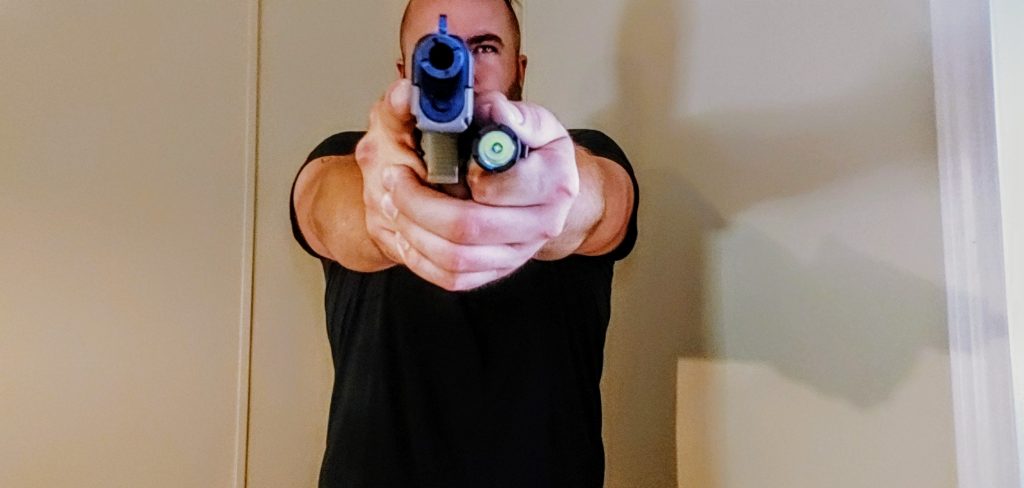
This technique is very stable and you have a great hold on the flashlight itself. However, if it’s a flashlight with a tail cap you can only reach the switch with the firing hand thumb. As far as flashlight techniques go this one is certainly a bit outdated and designed for Maglites rather than Surefires, Streamlights, etc.
The Ayoob
The Ayoob is very similar to the Chapman. You use a grip similar to a sword grip. The flashlight sits on the pointer finger of your offhand, with the pointer finger hands wrapped around your gun’s grip if possible. This technique is again old and designed for use with big flashlights with side switches.
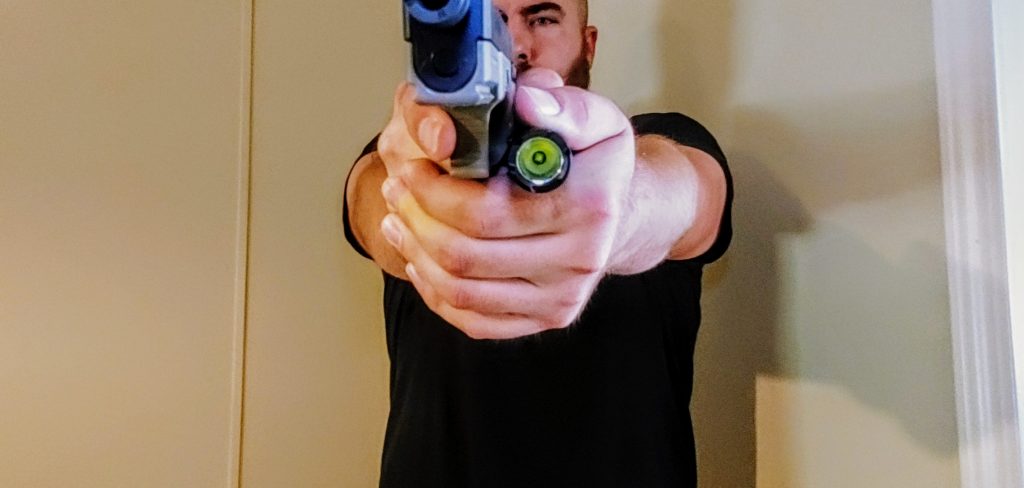
It’s comfortable and quick to assume. It takes very little training but doesn’t provide a ton of increased control compared to the Surefire or Chapman. This flashlight technique is the easiest to learn.
Flashlight Techniques
What I found so interesting is how these techniques feel like they were all created for the generation before mine. The only exception is the Surefire Method. It dawned on me that even 2 of the 3 more modern two-handed techniques are designed for Maglite style massive flashlights with side switches. We haven’t seen much innovation, and this is likely due to the fact that weapon mounted lights have shrunk, and become incredibly common.

